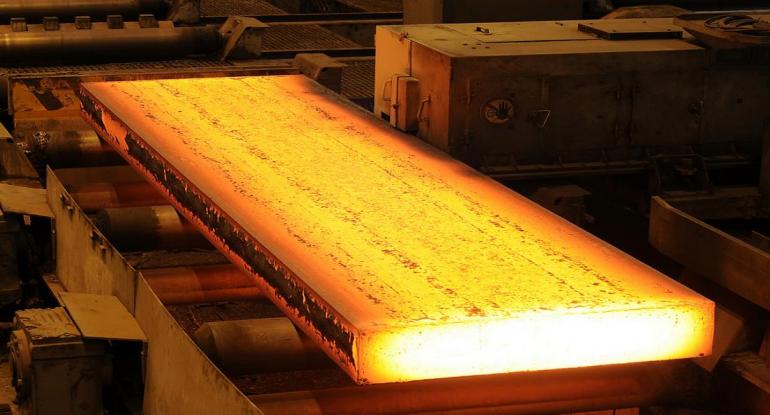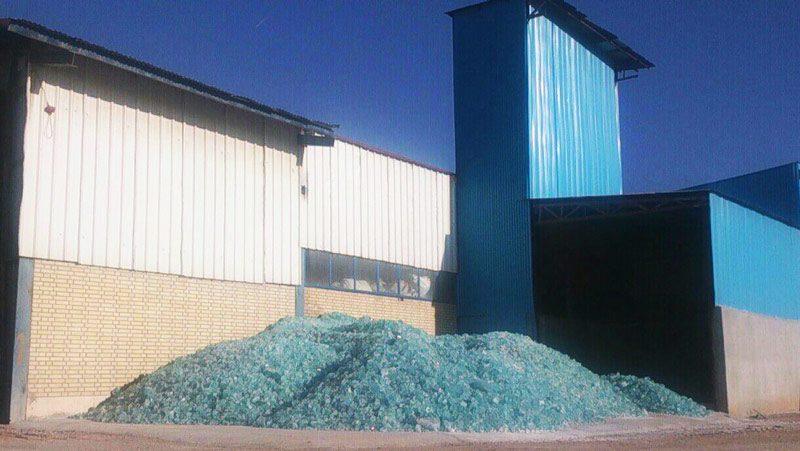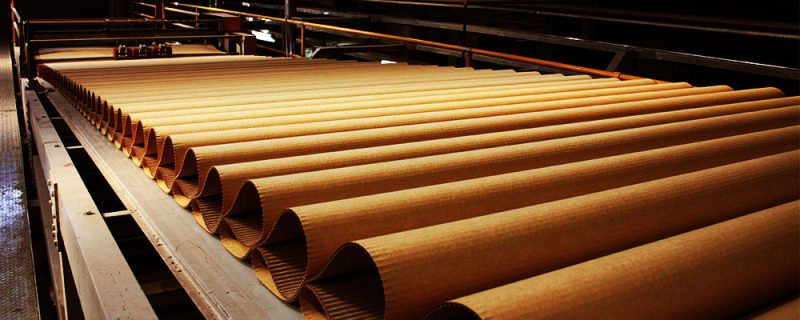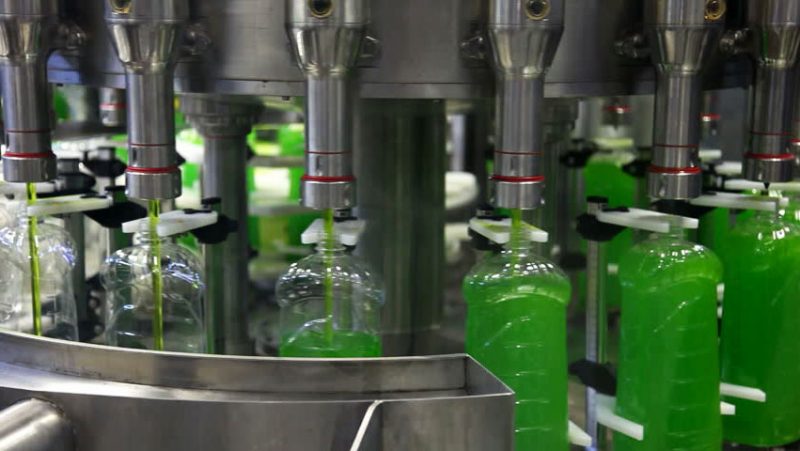The Application of Sodium Silicate in the Melting and Casting Industry
It is used for fireproof membrane coating of the molds and cleaners.
Another application has been in the iron, steel and cast iron industry since 1950s. Blends of sand and sodium silicate are used to make molds and steel wires in casting by compressed carbon dioxide gas in a compact form with an initial preparation. The initial hardening of the sand-sodium silicate blend in the presence of carbon dioxide causes a chemical reaction between carbon dioxide and sodium silicate.
Muscle Building
The muscle is a part of the mold that creates the hole and gaps in the mold and is often called by the type of sand made by the muscle box and is used after being hardened and taken out of the muscle box.
Muscles that are made out of the mold material along with molding, called soft muscle, are far from actual muscle. There are other types of metal muscles that are used in permanent molds and muscle making fundamentals don’t apply for them. Each muscle consists of two parts: body and support.
Types of Muscles
Internal muscles: they ensure the form of the slots, holes, and other internal parts of the casting.
Note: In cases where a few pieces of casting are required, the model is designed with a free piece and the use of simple wood molding or sub-series. When a lot of pieces of the casting are required, the use of self-contained muscle is not cost-effective. Therefore, the internal free muscle is made by the muscle box.
The pieces that are more complex in their internal form and cannot be molded into either a free piece or a self-contained muscle, are made with separate dry muscles.
External muscles: They ensure the form of the casting piece.
Note that when a small number of pieces are needed, the model selects the separation level so that it can be obtained using the 3 degrees of outer shape of the piece. It is a good idea to save the muscle box. When a large number of pieces are needed, molding is not cost-effective with 3 degrees. So, the model is designed with distant muscles.
Result: the pieces whose outer shape is complicated and which cannot be molded at 3 degrees are designed with a distant external muscle.
muscle molding: muscles that make up the form or piece of the mold after being placed side by side.
Muscle piece is a kind of muscle that is obtained by the muscle box and embedded in the lateral parts of the model.
Coat muscles are often placed at the bottom mold in the 2 cubic and circular forms. Circular muscles are usually called plate muscles. Coat muscles hang from the mold bottom through the rigid supports, which is why they are also called coat-suspense muscles.
Pendant muscles: muscles that are first fixed in the mold and, then, hang inside the mold cavity by placing the upper mold on the lower one.
To fix them, depending on the size of the muscle, bolt-glue belts like them are used.
Sitting muscles: Muscles that are placed in a vertical or standing state within the lower muscle. The tiny muscle is placed inside the lower degree or ground, and other parts of the muscle occupy the internal space of the upper mold in the shape of a banner. Heavy and large muscles are designed in this way.
Assembly muscle: A set of assembled muscles is called assembly muscle. The internal structure of some casting pieces are such that it is not possible to make the inner muscle in a uniform way. The mold maker is forced to make several muscle boxes to cast a piece so that the muscle maker can obtain a muscle system by having several muscles and assembling them together one over another or inside each other.
Separating muscles: They divide the space between upper and lower molds into 2 parts. Coat separating muscles may divide the inner mold space into several equal parts. The advantages and uses of this type of muscle include increasing the speed of molding, decreasing the costs of the cut piece, the production of additional plate models, better muscle balance in the mold, higher speed of muscle making, etc.
Cutting muscles: They are used in special areas for splitting or cutting the cast piece into two halves. In large car factories, the production and assembly of some parts in a uniform way are problematic. This is why such parts are manufactured by casting cutting muscle, and then, separated at the cut edges after turning, milling and drilling operations.
Filtration muscles: They are used to block the introduction of impurities into the mold cavity. It is located between the path pipe and the lateral canal. The material is ceramic or sandstone. In cases where the melting temperature is high, the secondary canal is made up of hard muscle separately, and then, is placed inside the mold to prevent deterioration.
Permanent muscles: They are made of cast iron or steel and are used to cast those parts that have large holes or internal gaps with much slope. To easily eject the muscle from the cast part, the outer surface is impregnated with separating materials.
Permanent muscles have been mostly used for parts with thick walls. Thin-walled parts are made by disposable muscles.
Muscle Mixtures
They are supplied and used based on the conditions and specifications. This is why various mixtures are used for different casting metals.
Muscle sand is usually selected from high quality sands of the following categories.
Type 1: Liquid or solid adhesives that form the sand with water. Each of them has a special drying temperature. These kinds of glues include starchy glues such as dextrin and gelatin glue that their drying temperature does not exceed 250 degrees C. Different types of mineral and oils, the best one being the linseed oil, are often used with starchy glues.
Muscle oil (a mixture of linseed oil and petroleum oil) is also a suitable muscle glue.
Sugar glues (molasses) are also in this category, which are not used today due to their high gas production and low disintegration, but only in materials with some other glues.
Type 2: They are liquid or solid adhesives that form the sand with water but dry in the air by passing certain gasses. The most important adhesive in this category is silicate glue that is dried in the vicinity of the air by passing Co2 gas.
Type 3: They are thermal glues that are mixed with sand in solid or liquid powder form and molded to a temperature of between 100o C and 150 o C, and at higher temperature it is dried and rugged. The best known type is the aldehyde form which is used in many advanced moldings. In addition to the above mentioned types, clay minerals such as bentonite types are also used as auxiliary adhesives in some cases.
Refractory adhesive and particles which are two major factors of all mold sand and muscle sand mixtures always contain other materials such as saw dust, coal powder, coke tar, beans flour, which increase the muscle capability of disintegration and gas penetrability.
So, in general, different types of muscle glues include linseed oil, fish oil, wheat and beans, corn flour, dextrin, beet molasses, rosin, silicates, urea resin, phenolic resin, starchy materials, cement, Paris plaster.
Types of Mineral Adhesives:
Although there are special rules for the composition of muscle mixtures, the success or failure of a particular mixture is usually not known unless practically used and tested in the workshop.
There are many variables in this field of casting in one specific workshop that may not apply for another workshop. For example, sand available to a casting workshop and existing economic problems often affect the choice of muscle mix for a specific item.
Properties of a Muscle Mixture:
A muscle mixture should be designed so that it has the following qualities: at high temperature and in the balanced conditions, the solidification of the metal should be proportional to the metal strength. A muscle that maintains its strength for a long time, at a high temperature, causes a warm break or crack in the casting piece. During freezing, if the metal is disintegrated and crushed, the muscle must retain its strength until the metal forms a solid crust around it, and then quickly loses its strength when the metal contraction begins, and thus, avoiding metal cracking, makes a smooth surface against molten metal, so that the metal cannot penetrate the muscle, possesses sufficient hardness, and proper resistance to the flow of molten metal, otherwise, it may crack, break, etc. The muscle mixture should also be resistant to heat from the melting temperature, and be not affected by the mold or the atmosphere created by the molten metal.
The muscle mixture should not lose much of its strength during storage. It is important in the molds that are kept for considerable maintenance before casting.
The muscle box should have enough resistance against breaking during transport, bake easily and quickly, so that the minimum muscle treatment is needed.
The muscle box should also keep the correct shape before and during casting. When it comes to contact the molten metal, the gas can be produced at a minimum degree. It should also have a smooth surface so that a piece with a smooth surface can be produced. Additionally, the muscle mixture should have gas permeability to let the gasses out created during casting.
The muscle mixture should easily come out of the solid part so that the minimum cleaning cost is expended. It should not stick to the muscle box.
According to the above specifications, the muscle mixture is prepared and used, and for this reason, various mixtures are also considered for different casting metals.
Muscle Box
The muscle boxes are made up of wood or metal. The wooden type is used in manual muscle making and in small number, and the metal muscle types are used in machine-making muscle and in a large number. The thin and moving parts of the muscle box are generally selected from the metal to provide greater durability and rigidity.
Different types of muscles such as sand muscles with oil glues, skeletal muscles, the hot box, the muscles produced by the carbon dioxide method and the muscles produced by the cold glue for casting are used. The type of muscle should not be necessarily similar or identical to the mold material. For example, skeletal muscles are used more commonly in more sand-based molds. The selection of the matter of the muscle is essentially based on the muscle size, muscle complexity, the time of muscle making, the exact dimensions, and costs. In the casting lab, the method of preparation of two types of muscle is expressed.
Sand Muscle Co2
In this type of sand muscle, silica sand with liquid sodium silicate is used which is the activator of the Co2 gas glue.
Preparation Method:
First, take some silica sand with high mesh and add 5 % by weight of silicate glue. Mix the sand with glue by hand so that the prepared sand does not stick to the hand at all. It is notable that in the factories the process of mixing glue with sand is done by muscle mixers. After mixing the glue with sand, pour it into the muscle box and squeeze it a little. Next, insert several air channels through it and blow Co2 gas to a small amount from air channels into the sand mixture. Separate the two sides of the muscle box and start the final blowing of co2 gas until the muscle is hardened. Then, remove the muscle from one side of the muscle box.
The muscle s that are Co2-based are often used for limited production, because these muscles can be made in a very short time using the least equipment. Such muscles basically consist of sand and sodium silicate (as glue) that acquire their final strength following the blowing of Co2 into the mixture. Such muscles are usually more expensive than dry sand muscles, especially higher cost is tangible when larger sizes are needed. However, higher cost is often compensated by higher preparation speed.
Heat-Sand Muscles
In this type of sand, silica sand with phenol formaldehyde glue is used, which is available in the market in a ready mixed form, and its activating agent is heat. The materials used as glues in the preparation of these muscles include glues that their composition base is spout. The muscles that are provided with a heat box are immediately prepared and do not need drying. Their main limitation is size, which cannot have a thickness of more than 63 mm.
Preparation Method:
First, preheat the metal box (aluminum) for about 2 minutes. Then, pour the heat-sand into it. For this type of muscle sand, knocking is not needed, and to remove the muscle box air, only stir the sand mix by the air skewer. Then, heat around the muscle box, which its two halves are tightened by a clamp, by a torch for about one minute. Then, release the clamp and separate the two halves of the muscle box. Now, remove the muscle from inside of the muscle box half. For easy removing, apply the oil to the muscle box.





